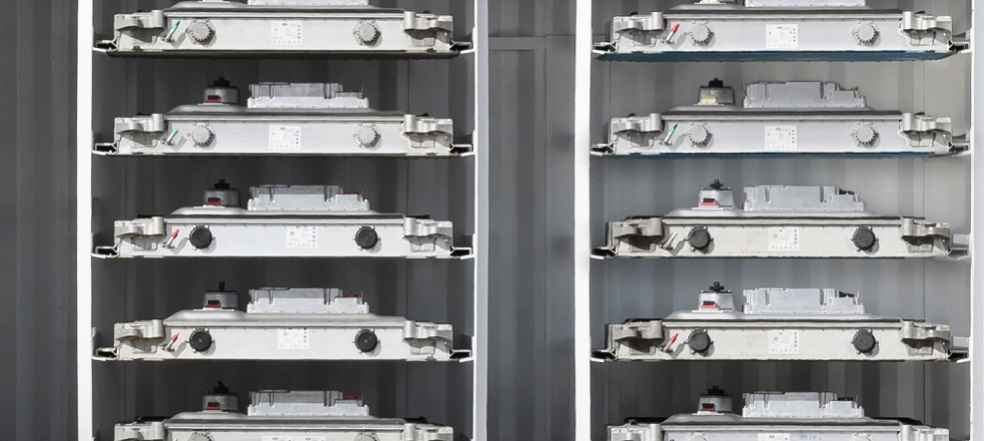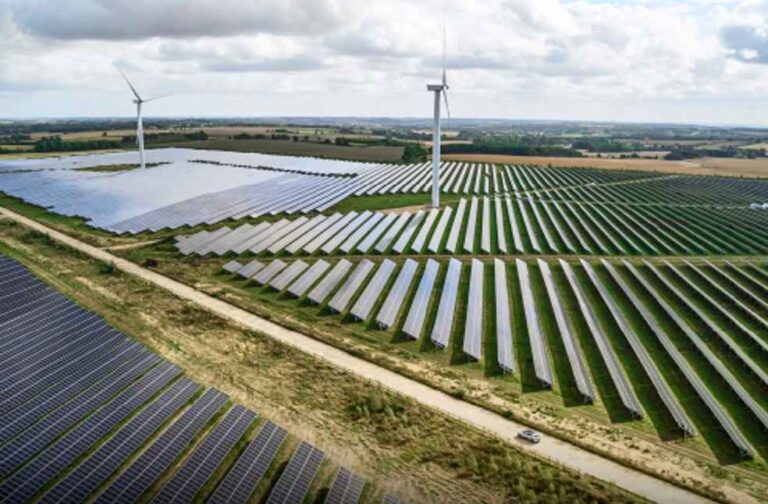Jaguar Land Rover (JLR) and renewable energy trailblazer Wykes Engineering have forged a groundbreaking partnership. Their mission is to craft one of the UK’s most expansive green energy storage systems with Jaguar I-PACE batteries.
Through the advanced energy storage solution named Wykes Engineering BESS, each unit integrates 30 repurposed I-PACE batteries. Originating from prototype and engineering test vehicles, these batteries boast a storage potential of 2.5MWh when at maximum capacity. By 2023’s close, JLR anticipates supplying batteries with an accumulative storage capability of 7.5MWh – a quantum that can electrify 750 homes for 24 hours. The visionary strategy allows for the development of more storage containers in the future, housing additional second-life batteries from decommissioned production vehicles.
These innovative BESS units connect to a high-efficiency inverter that optimizes energy management. This system not only feeds power to the National Grid during high-demand periods but also draws power during low-demand spans, conserving it for ensuing requirements.

Battery storage systems of this caliber play a paramount role in shifting towards a decarbonized Grid. Equipped to address abrupt energy spikes, these systems also ensure that harvested solar and wind energy remains available for future use.
The cohesion between JLR and Wykes Engineering exemplifies streamlined innovation. Batteries from the Jaguar I-PACE seamlessly slide into racks within on-site containers, eliminating any superfluous manufacturing steps. This approach accentuates the project’s environmental integrity.
This collaboration underscores JLR’s unwavering commitment to the circular economy, aligning with its audacious carbon-neutral objective for 2039.
The prospective magnitude for second-life batteries in stationary applications, especially for renewable energy storage, is prodigious. By 2030, the global market could soar to an astonishing $30 billion, with supply reaching 200 gigawatt-hours annually. JLR’s superior batteries, perfect for such applications, still retain 70-80% of their original capacity after surpassing electric vehicle standards.

Embracing a repurposing ethos for vehicle batteries, JLR unveils avant-garde business models in energy storage. When these batteries surpass their second-life threshold, JLR’s recycling strategy ensures raw material extraction, fulfilling the circular economy’s true essence.
François Dossa, JLR’s Strategy and Sustainability maestro, extols the venture as this alliance epitomizes sustainability. By harnessing residual capacity in EV batteries for the energy sector, JLR will underscore its unwavering commitment to circular principles. Crafting an exhaustive EV ecosystem accentuates the drive towards net-zero transformation of the company.
Reuben Chorley, JLR’s torchbearer for Sustainable Industrial Operations, resonates with Dossa’s enthusiasm. “We’re delighted to be working with Wykes Engineering on this pioneering project that will help unlock the true potential of renewable energy. Developing second-life battery projects like this is crucial to helping JLR adopt a new circular economy business model and drive us toward achieving carbon net zero by 2039.”

David Wykes, the linchpin at Wykes Engineering, elucidates the system’s brilliance, emphasizing, “One of the major benefits of the system we’ve developed is that the containers are connected to the Grid in such a way that they can absorb solar energy, that could otherwise be lost when the grid reaches capacity. This excess energy can now be stored in the second-life I-PACE batteries and discharged later. This allows us to ‘overplant’ the solar park and maximize the amount of power we generate for the area of land we are using.”
This venture mirrors the transformative potential that blooms when the automotive realm synergizes with renewable energy pioneers. With visionaries like JLR and Wykes Engineering at the helm, a sustainable, carbon-neutral horizon draws closer.
EV WORLD | Santander and MG Motor to Launch EV Benefits Ecosystem for Electric Shift





